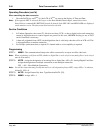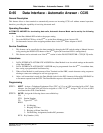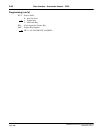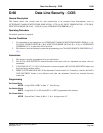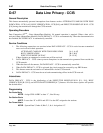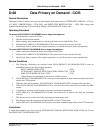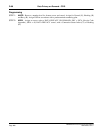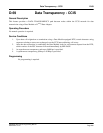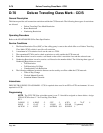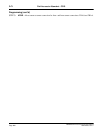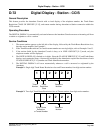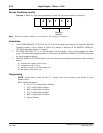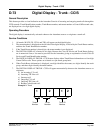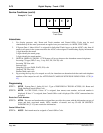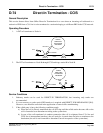
NEAX2400 IPX Feature Programming Manual
Page 892 NDA-24297, Issue 1
D-70 Deluxe Traveling Class Mark - CCIS
D-70 Deluxe Traveling Class Mark - CCIS
General Description
This feature provides call connection restrictions within the CCIS network. The following three types of restrictions
are allowed:
• Deluxe Traveling Class Mark Restriction
• Route Restriction
• Numbering Restriction
Operating Procedure
Refer to the NEAX2400 IPX Office Data Specification.
Service Conditions
1. The Route Restriction Class (RSC) of the calling party is sent to the called office as a Deluxe Traveling
Class Mark (TCM), which is used for call restriction.
2. A maximum of 15 restriction levels can be sent as a TCM.
3. The transmitted TCM is used to check restrictions on calls outside the CCIS network.
4. Route Restriction is used to restrict a call based on the caller’s restriction class and the selected route.
5. Numbering Restriction is used to restrict a call based on the number dialed. The following three types of
Numbering Restrictions are used:
• Toll Restriction
• Toll Restriction-3/6 Digit
• Unauthorized Code Restriction
6. The following additional restriction features can be used by an office within the CCIS network:
• Time-of-Day Change
• Clocked Manual Override
• Attendant Manual Override
Interactions
DELUXE TRAVELING CLASS MARK - CCIS is required when used in an EPN or ETN environment. It is not
required for CCIS.
Programming
ARTD - The CCIS TIE Line voice/data route(s) over T-1 should be assigned as shown below. Assign
CDN 40:TCM as data “1” for Traveling Class Mark.
RT: 1
2-ONSG :2 4-INSG :2 5-TF :3 6-TCL :4 7-L/T :1
8-RLP :2 13-AC :1 15-LSG :12 30-PAD :7 (optional)
40-TCM :1 43-BT :1 49-TRKS :0/1 50-DPLY :1



